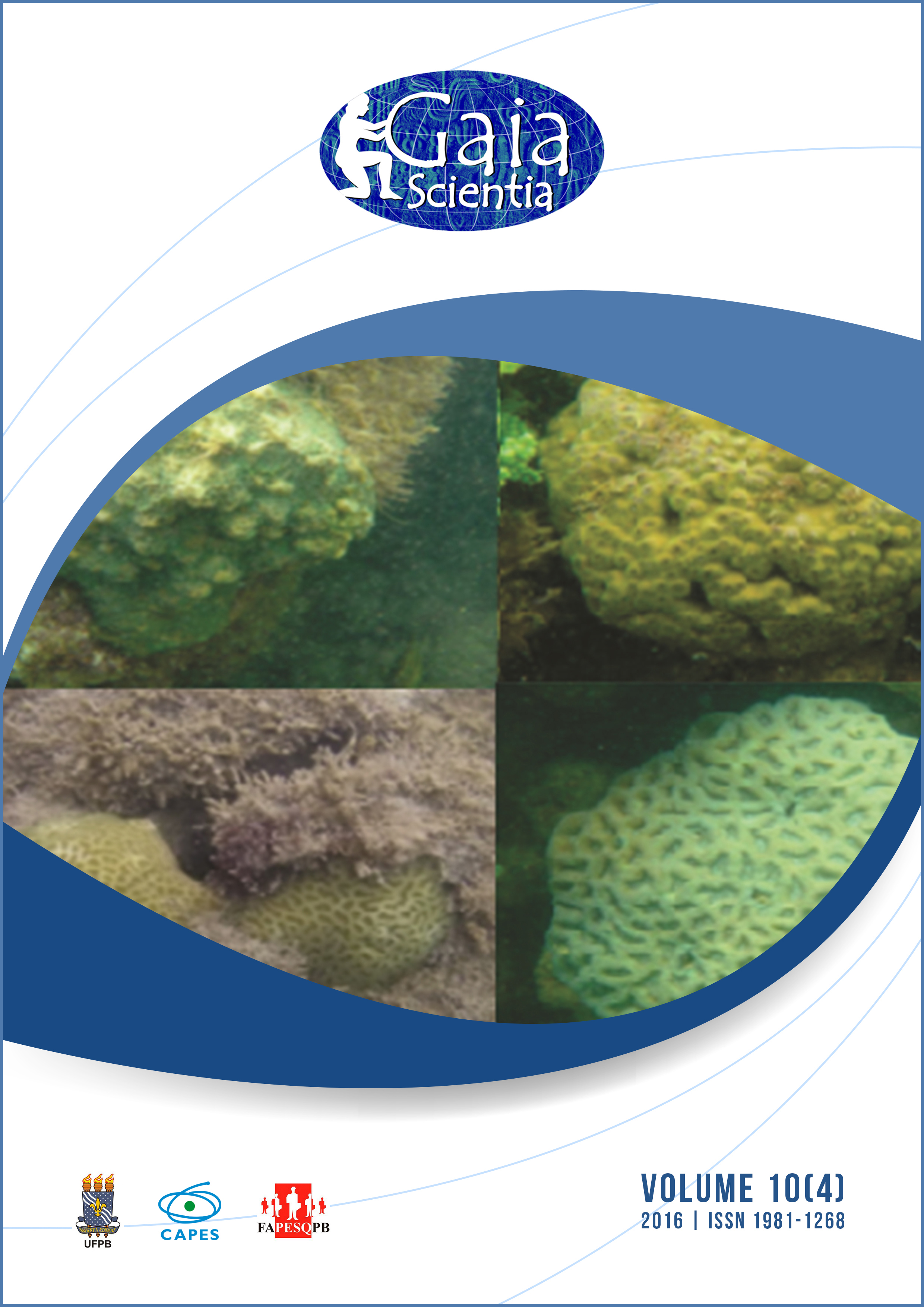REVISION AND GLOBAL DISTRIBUTION OF HESIONE SPLENDIDA (ANNELIDA, POLYCHAETA, HESIONIDAE)
Keywords:
Brazil, Hesione picta, New synonyms, Red Sea, World occurrence.Abstract
The genus Hesione includes many nominal species throughout the world, of which the first described was the species Hesione splendida, from the Red Sea. Subsequently, during the last eighty years, some polychaetes researchers have been proposed many synonyms for this taxon. We revised all synonyms of H. splendida based on type material, Brazilian specimens and original descriptions. We confirmed the synonyms established for researchers and we are proposing that the species H. ehlersi syn. n. and H. steenstrupii syn. n. are synonyms of H. splendida. We are also providing the current global distribution for this hesionid polychaete. H. splendida groups several nominal species that exhibit few morphological and color polymorphisms. The main diagnostic characters are the color of dorsum (transversal narrow ivory colored lines, and median circular white-yellowish patches); absence of palps; two papilliform lateral antennae; and a tubercle on the middle-posterior region of proboscis. The species H. splendida inhabits hard and soft bottoms, in intertidal and infralittoral zones, in Africa, America, Asia and Europe.Downloads
References
Amaral ACZ, Nallin SAH, Steiner TM, Forroni TO, Filho DG. 2013. Catálogo das espécies de Annelida Polychaeta do Brasil. Available at: <http://www.ib.unicamp.br/museu_zoologia/sites/www.ib.unicamp.br.museu_zoologia/files/Cat%C3%A1logo_Polychaeta_Brasil_Amaral_et_al_2013_1a.pdf>. Accessed: Aug 25, 2015.
Augener H. 1913. Polychaeta I, Errantia. Die Fauna Südwest-Australiens. 4(5): 65–304.
Bellan G. 2001. Polychaeta. In: Costello MJ et al. (Eds), European register of marine species: a check-list of the marine species in Europe and a bibliography of guides to their identification. Paris: Collection Patrimoines Naturels, Publications Scientifiques du MNHN, Paris, p. 214–331.
Castelli A, Bianchi CN, Cantone G, Çinar ME, Gambi MC, Giangrande A, Sareri DI, Lanera P, Licciano M, Musco L, Sanfilippo R, Simonini R. 2008. Annelida Polychaeta. Biol. Mar. Mediter. 15: 323–373.
Costa DA, De Assis JE, Christoffersen ML. 2008. New synonym of Hesione splendida (Hesionidae, Polychaeta, Annelida). Biociências, 16(2): 131–133.
Day JH. 1962. Polychaeta from several localities in the Western Indian Ocean. Proceedings of the Zoological Society of London, 139(4): 627–656.
Day JH. 1967. A Monograph on the Polychaeta of Southern Africa. Part 1. Errantia. Trustees of the British Museum (Natural History), 656: 1–458.
Fauchald K. 1977. Polychaetes from intertidal areas in Panama, with a review of previous shallow-water records. Smithsonian Contributions to Zoology, 221: 1–81.
Faulwetter S. 2010. Check-list of marine Polychaeta from Greece. Assembled in the framework of the EU FP7 PESI project. Aristotle University of Thessaloniki, Thessaloniki.
Fauvel P. 1953. The fauna of India including Pakistan, Ceylon, Burma and Malaya: Annelida, Polychaeta, Allahabad: The Indian Press, 507 p.
Hartman O. 1938. Annoted list of the types of polychaetous annelids in the Museum of Comparative Zoology. Bulletin of the Museum of Comparative Zoology at Harvard College, 85: 1–31.
Hartman O. 1951. The littoral marine annelids of the Gulf of Mexico. Publications of the Institute of Marine Science, University of Texas, 2(1): 7–124.
Horst R. 1921. A review of the family of Hesionidae with a description of two new species. Zoologische Mededeelingen, 6: 73–83.
Imajima M. 2003. Polychaetous Annelids from Sagami Bay and Sagami Sea Collected by the Emperor Showa of Japan and Deposited at the Showa Memorial Institute, National Science Museum, Tokyo (II). Orders included within the Phyllodocida, Amphinomida, Spintherida and Eunicida. National Science Museum Monographs, 23: 1–221.
Müller F. 1858. In: Grube AE, Einiges über die Annelidenfauna der Insel Santa Catharina an der Brazilianischen Küste, Archiv für Naturgeschichte, 24(1): 211–220.
Nonato EF, Luna JAC. 1970. Anelídeos Poliquetas do Nordeste do Brasil. I – Poliquetas Bentônicos da Costa de Alagoas e Sergipe. Boletim do Instituto Oceanográfico da Universidade de São Paulo, 19: 57–130.
Parapar J, Besteiro C, Moreira J. 2004. Familia Hesionidae Grube, 1850. In: Viéitez JM, Alós C, Parapar J, Besteiro C, Moreira J, Núñez J, Laborda AJ, San Martín G. (Eds), Fauna Ibérica. Annelida Polychaeta I, Madrid: Museo Nacional de Ciencias Naturales, CSIC, Madrid, v. 25, p. 210–267.
Pleijel F. 1998. Phylogeny and classification of Hesionidae (Polychaeta). Zoologica Scripta, 27(2): 89–163.
Ramos M. 2010. Iberfauna. The Iberian Fauna Databank. Available at: <http://iberfauna.mncn.csic.es/>. Accessed: Aug 19, 2015.
Read, G. 2015. Hesione Savigny in Lamarck, 1818. In: Read G, Fauchald K. (Eds), World Polychaeta database, World Register of Marine Species. Available at: <http://www.marinespecies.org/aphia.php?p=taxdetails&id=129308>. Accessed: Aug 14, 2015.
Savigny JC. 1818. Les Annelides. In: Lamarck JB, Histoire naturelle des animaux sans vertèbres, 5: 302–374.
Treadwell AL. 1939. Polychaetous annelids of Porto Rico and vicinity. Scientific Survey of Porto Rico and the Virgin Islands, 16(2): 149–319.
Uebelacker JM. 1984. Chapter 28. Family Hesionidae Sars, 1862. In: Uebelacker JM, Johnson PG (Eds), Taxonomic guide to the polychaetes of the northern Gulf of Mexico, Final report to the Minerals Management Service, contract 14-12-001-29091, Mobile: Barry A. Vittor & Associates, Mobile, USA, p. 1–39.










